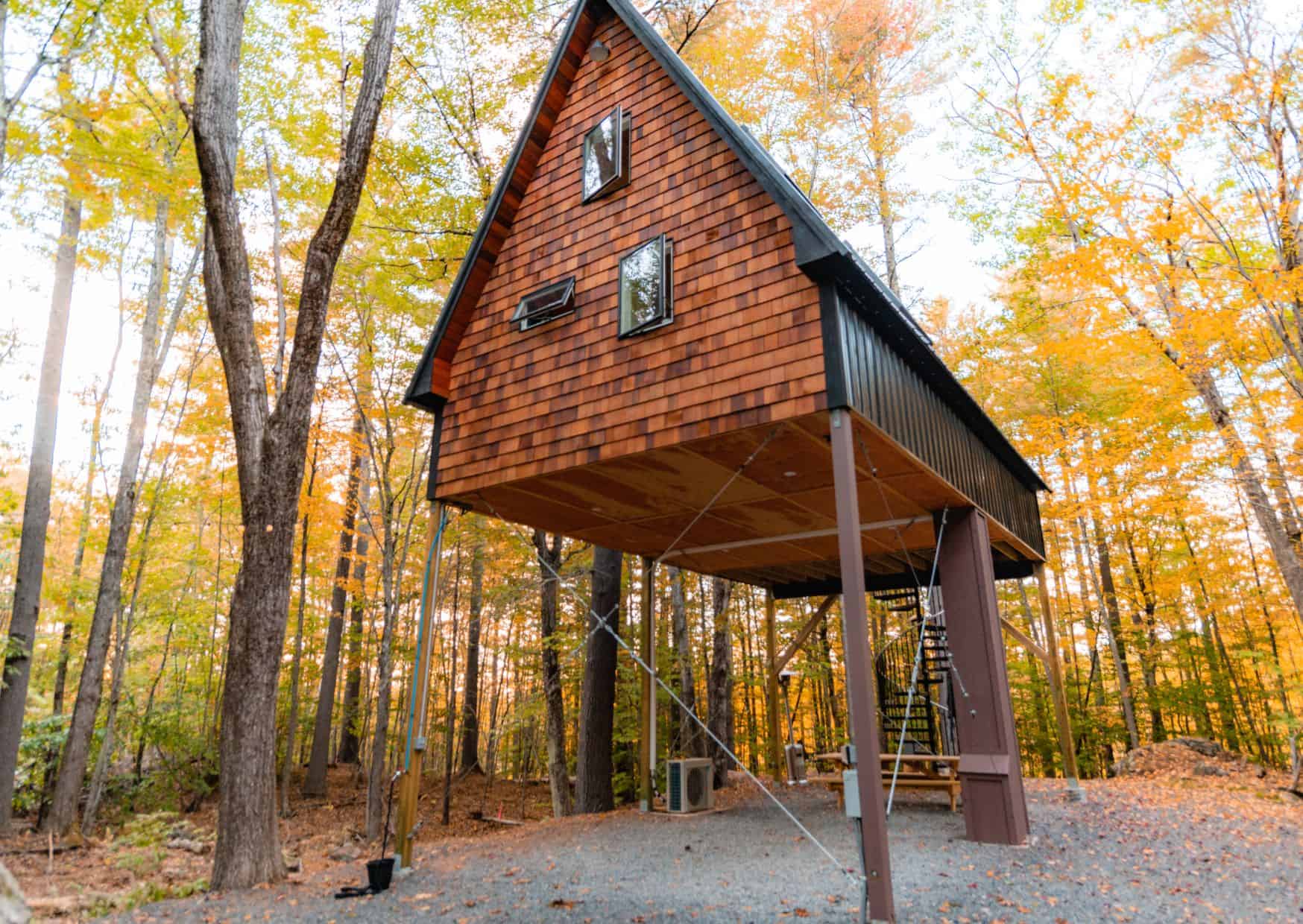#short-term-rentals
#short-term-rentals
[ follow ]
#airbnb #housing-affordability #housing-policy #sonder #local-law-18 #marriott #bankruptcy #housing-crisis #tourism
fromThe Mercury News
3 days ago'Please don't do this to us': Saratogans ask city not to allow short-term rentals
Homeowners would have to apply for a license to rent out their primary residence. When asked how the rules and tax collection would be enforced, community development director Bryan Swanson said that the city and consultants who work with travel booking websites would be in charge of making sure that revenue is collected appropriately and that visitors are following the rules.
Real estate
Business
fromFast Company
2 weeks agoSonder, the WeWork of apartments, may be bankrupt, but the short-term rental business is healthy
Sonder Holdings filed for bankruptcy after unexpected Marriott integration costs and burdens from fixed long-term lease obligations undermined its short-term rental business model.
Film
fromFortune
3 weeks agoThis millennial home designer spent 9 months building a replica of 'The Holiday' cottage-now it's renting fast at $499 a night | Fortune
A fan-built replica of the Rosehill Cottage from The Holiday is available for short-term rental in Georgia after a nine-month build by designer Lucy Small.
fromtherealdeal.com
1 month agoChecking out: Sonder's sudden collapse leaves landlords, guests scrambling
Hospitality is supposed to be about comfort, leisure and service, not guests using words like stranded or homeless. Yet those were the terms popping up in headlines this week as Sonder's collapse rippled through buildings around the world. The short-term rental operator, once a proptech darling and a $2 billion public company, announced it's preparing to file for Chapter 7 liquidation in the U.S., with parallel insolvency proceedings abroad. Operations ceased almost immediately.
Real estate
Real estate
fromBusiness Insider
1 month agoRental companies are trying to snap up clients after the Marriott-Sonder implosion
Marriott ended its licensing deal with Sonder, forcing guests to find immediate lodging while short-term rental companies offered discounts and free memberships to affected customers.
fromThe Verge
1 month agoTesla is fighting the EV sales slump with short-term rentals
Tesla is now in the business of short-term car rentals, as the company tries to mitigate falling sales in the US following the expiry of federal tax credits for electric vehicles. Rentals are currently being offered in two California Tesla stores in San Diego and Costa Mesa, with plans to expand to more locations by the end of this year, Electrek reports.
Cars
fromBusiness Insider
1 month agoI earn a living renting out a Jamaica beachfront cabin. Hurricane Melissa caused flooding like never before.
We were stressed about Hurricane Melissa. Authorities told us it would be a Category Five hurricane. They said, "We've never had a hurricane like this before. It's going to wreck the place. Prepare, prepare, prepare." When it finally arrived, it wasn't the worst I've lived through, but it was rough. I sheltered at home with my wife, and the wind and rain were so strong that we couldn't see anything. Outside our window, it was all just white - a white spray of water everywhere.
Real estate
fromenglish.elpais.com
1 month agoTulum falters: Tourism declines in the jewel of the Riviera Maya
The restaurants and hotels along the Riviera Maya's golden mile in Mexico have a few visitors, but nothing is crowded. It's the low season that's the mantra repeated by hoteliers, shopkeepers, and even the mayor. The situation would be typical for this time of year the end of hurricane and seaweed season were it not for the official tourism figures showing that hotel occupancy dropped by more than 10% in September.
Travel
Real estate
fromBusiness Insider
1 month agoA profitable Airbnb host asks 3 questions before choosing a short-term rental property to invest in
Short-term rentals can produce higher cash flow and tax benefits but require more hands-on management compared with lower-income, lower-involvement mid- and long-term rentals.
fromSFGATE
2 months agoNew regulations force vacation rentals in national park gateway to shut
He and his wife purchased a five-acre property with the intention of opening a campground-like retreat made up of four Airstream trailers that visitors could rent on Airbnb. After spending five years and over $250,000 preparing to open - a process that included restoring the vintage Airstream trailers by hand, connecting those trailers to utilities systems, moving through permitting processes and developing business and marketing plans - Troy's venture was up and running for about a week.
US news
fromwww.thelocal.fr
2 months agoWhat you need to know about legally renting out a French second-home
This covers any types of short-term (less than 90 days at a time) rentals to tourists - that would include renting out on Airbnb or similar online platforms, renting as a gite or rentals organised through other means. Any property listed as a maison secondaire (second home) that is rented out to tourists, even just for a couple of weeks of the year, now needs to be registered with local authorities as a meuble de tourisme.
France news
fromMoneywise
2 months agoNYC cracked down on Airbnbs 2 years ago - yet rent remains sky high for locals. Why experts say the ban hasn't had the impact lawmakers intended
The rationale behind the crackdown was twofold: First, it was meant to tame the influx of tourists who were impacting the quality of life of local residents who were left feeling crowded out of their own neighborhoods. The second objective was to boost housing inventory for locals, with the belief that the ban on short-term rentals would increase the housing stock as units that had been repurposed for tourism would revert back to long-term housing.
New York City
fromSFGATE
3 months agoShort-Term Rental Chaos and the Rise of 'Underground' Listings: 5 Key Takeaways
The surge in short-term rentals is altering the landscape of quiet neighborhoods, causing disruptions and raising concerns among long-term residents. Local governments, such as the town of Wells, ME, are grappling with the challenge of balancing the economic benefits of tourism with preserving the character and tranquility of residential areas affected by STRs. Maine's approach to regulating STRs primarily occurs at the local level, with varying requirements such as annual permits, adherence to safety standards, and zoning restrictions in different municipalities.
Real estate
Los Angeles
fromLos Angeles Times
3 months agoL.A. cracks down on Hollywood party houses and illegal short-term rentals. Violators to pay hefty fines
Los Angeles settled lawsuits against illegal short-term rental and party house operators in Hollywood, imposing fines and penalties on property owners for nuisance and regulatory violations.
fromSFGATE
3 months agoRecord-High Demand For Short-Term Rentals in Lead Up to Labor Day 2025
As Labor Day approaches, there is a surge in demand for short-term rentals in coastal areas of the U.S., indicating a strong desire among travelers for one last summer getaway. Despite economic uncertainties, Americans are indulging in travel, with July bookings reaching record levels, according to the latest data from AirDNA. The preference for larger and more expensive rental properties, especially in coastal regions, has been notable. While occupancy rates slightly dipped due to increased listings, total nights booked rose year over year.
Travel
New York Mets
fromNew York Post
3 months agoSouthampton bans short-term rentals in move that officially cancels weekend trips to Hamptons: 'Out of luck'
Southampton enacted a two-week minimum rental rule, effectively banning weekend short-term stays and greatly increasing costs for typical weekend visitors.
fromSFGATE
4 months agoFirst new-build hotel in over 15 years opens near Joshua Tree National Park
"As a Joshua Tree local, we all know the best entrance is the Twentynine Palms entrance. ... It's the part of the park that looks the most like it's a different planet," said Benjamin Uyeda, a co-founder and designer of the hotel who has lived in the area since 2017.
LA real estate
fromwww.archdaily.com
4 months agoTerra and Vidru House / Architecture for Humans + Federico Cartamantiglia + Fabrizio Carboni + Enrico Manca
Casa Terra e Vidru was developed in collaboration with designer Fabrizio Carboni and architect Enrico Manca, reflecting the client’s desire for a personal home and rental space.
Renovation
fromSFGATE
4 months agoShort-Term Rentals See Last-Minute Bookings Spike, and These Cities Win Big
"People are getting more comfortable with booking short-term rentals and figuring out the pricing mechanics. Many STRs offer last-minute discounts to fill inventory, so that the closer you get to a stay, the less expensive it is."
E-Commerce
Travel
fromBusiness Insider
7 months ago20 vacation hot spots where short-term rental prices surge in the busy season - and how to avoid the markup
Short-term rental prices can increase by over 100% in popular vacation spots during peak seasons.
Booking early and being flexible can help travelers manage costs.
Augusta, Georgia shows the highest price surge at 178% during the Masters Tournament.
[ Load more ]































